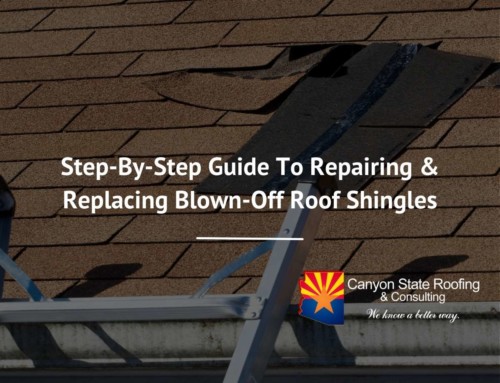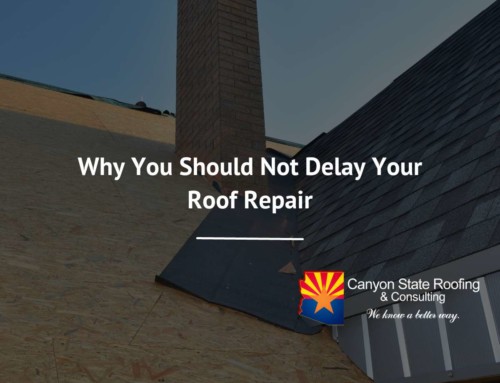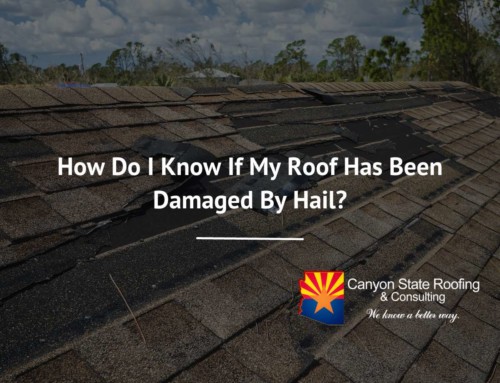Roof Repair After A Storm Damage: What To Do
How To Detect & Repair Roof Damage After a Storm
Storm damage isn’t always an emergency. Sometimes it’s better to wait until a Sun City roofing contractor can check your roof correctly. However, if you notice water intrusion into your home, you may want to act immediately.
Some storms can cause significant structural problems, such as leaks and cracks, leading to water intrusion. In the worst-case scenario, the storm damage can lead to the collapse of the building. But as we mentioned, each situation is different, so you must check the structure first to see what you can do.
This article provides basic information on how to repair storm damage to your roof on time. This way, you can be ready for any fix your roof needs.
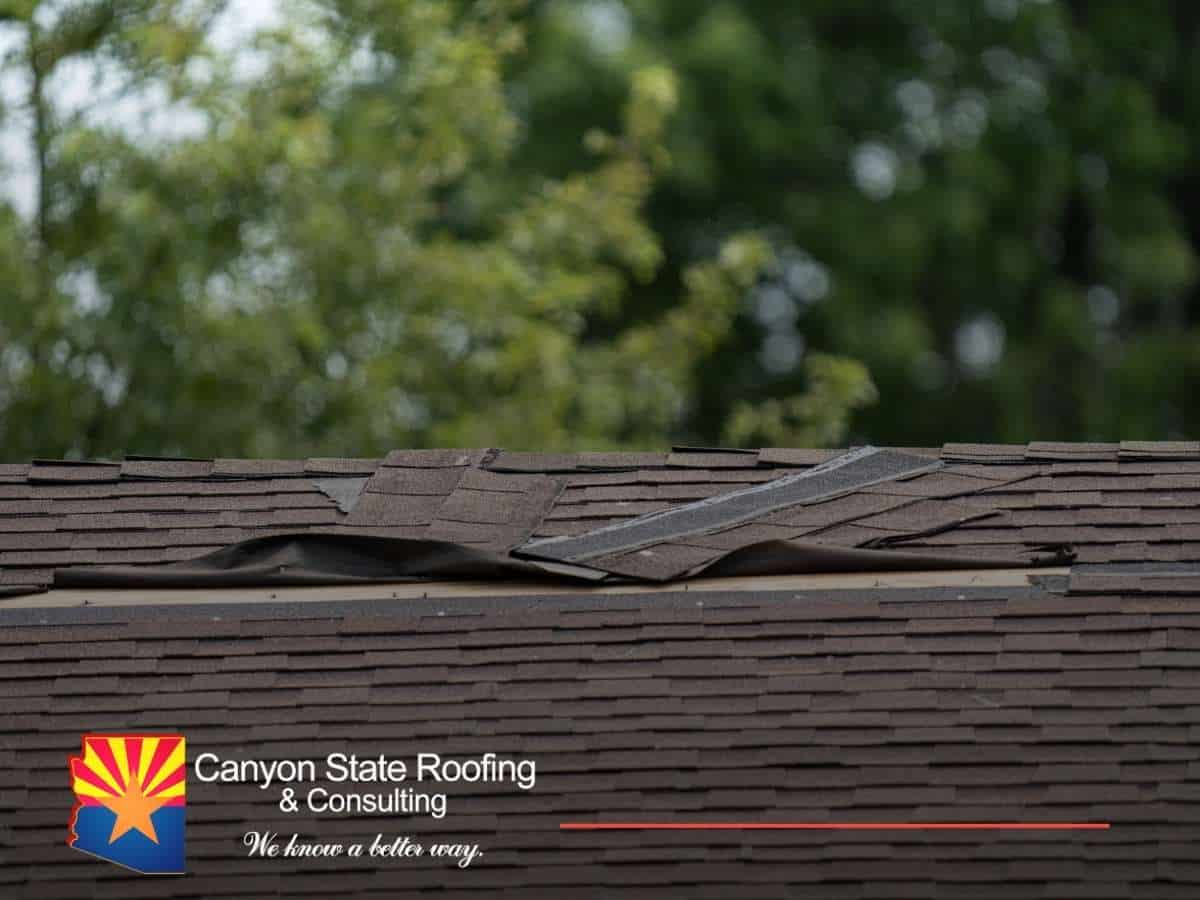
Signs Of Roof Damage After a Storm
It is important that you not only perform a visual inspection of your property after a monsoon or a storm but also that you schedule a roof inspection by a certified Tempe roofing contractor. A roofer can get on your roof safely and inspect all the roofing materials closely to find even minor damage. Discovering this damage early allows you to make immediate roof repairs and stop the damage from spreading.
When you conduct your visual inspection, here are a few things you should watch out for:
Obvious Roof Damage
Monsoons can come with winds anywhere between 30 mph and 70 mph or more, depending on the severity of the storm, and they can pound your property with both rain and hail. They can also toss tree limbs and other debris around, which can land on your roof and damage it.
Survey your roof from the ground to look for signs of obvious damage. This can include shingles or tiles that are dented or missing from the roof. It can also include shingles that are torn or curled. If you do not get immediate Mesa roof repair for these problems, the roof will be vulnerable to extensive water damage and more.
Damage To The Gutters, Vents, Or Windows
Gutters are an important component of your roof, ensuring that water is properly diverted away from the roof and the property to prevent damage. Check the gutters to ensure that they are not dented, clogged, or knocked loose in any spot.
Also look at items that intersect the roof, such as vents or gable windows. Look for cracks, loose weather stripping or flashing, broken glass, or torn screens. Check these items from the inside, as well. Some damage will be easier to see close up, which you are more likely to be able to do from inside.
Issues With The Attic Or Ceilings
Finally, head into your attic to look for signs of water damage there. Look for brown spots or the formation of mold or mildew. Look for any actual water, as well, which might appear if you have a significant leak.
You should also walk through your home looking for signs of leaks on your ceilings. These will usually appear as yellowish or brownish spots, but you may also see mold or mildew or even peeling paint. Know that by the time a leak has shown up on your ceiling, a significant amount of water has penetrated your property, so it is important that you act quickly to make the roof repair to stop the spread of damage.
You should always conduct a visual inspection of your roof after a big storm comes through the area. Don’t risk getting on your roof to take a closer look. You could easily fall and seriously hurt yourself. Instead, call a Glendale roofing contractor to perform a closer visual inspection. The sooner you can discover roof damage, the sooner you can make a roof repair and protect your roof and your property from further damage. These extra steps will save you a lot of time and money in the long run.
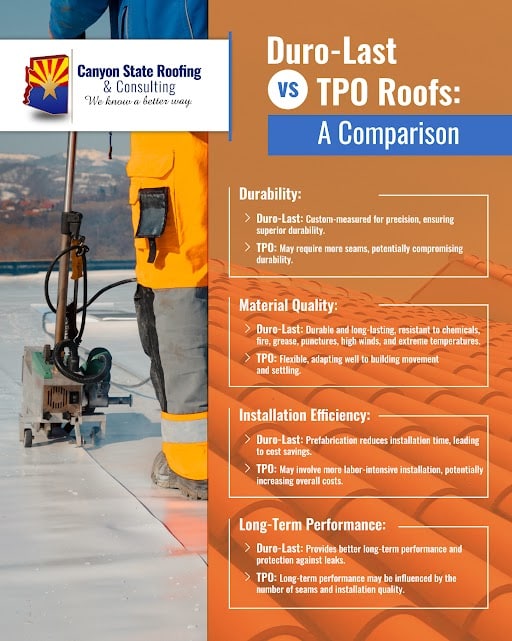
What Should You Do If Storm Damage Affects Your Roof In Arizona?
To address storm damage on your roof, file an insurance claim promptly, document the damage, and schedule a professional inspection. Costs for repair or replacement vary depending on your roof’s size and type. For detailed guidance on handling roof storm damage, follow these steps:
Evaluate The Roof Damage
The first thing you should do is assess the damage. By assessing the damage, you will focus on your needs with your insurance company to avoid unforeseen discrepancies.
The best time to check the damage is in daylight, but if that’s not possible, you can always use a powerful flashlight to see each side of your roof more. Also, use a pair of binoculars to identify damaged areas more precisely.
Calculate the general square foot area to see how much has been damaged. Notice the severity of the damage, and see if there are missing shingles before calling your insurance company or Glendale roofing contractor.
You should also document the damage that’s visible or exposed. You can use a cellphone or camera to take pictures. Take note of the color of the material and the shade, and pay special attention to exposed tarpaper, plywood, and missing shingles.
Call Your Roof Insurance Company
You must contact your insurance company as soon as possible, but first, ensure the damage is large enough to be covered through your insurance.
When a storm strikes a large residential area, homeowner’s insurance is crucial, as contractors often become too busy to respond promptly..
Make Temporary Roof Fixes If Necessary
You can make some temporary fixes that don’t need professional expertise. For example, if the roof has been damaged in an area directly above the living space and it has leaking water, you can put a bucket or garbage can under the leak. Remove any valuable items in the area to prevent more damage (moisture can damage many things within a few hours!)
Use a strapped tarping method if the damage is too serious. Smaller repairs don’t need to be waterproofed because they can be shingled right away.
Get a Professional Inspection
Following the initial assessment of your roof, it’s essential to have a professional come in for a more comprehensive assessment, such as one of our Queen Creek roofing contractors. A licensed roofer has the expertise to spot issues you might miss, such as hidden leaks or structural damage. Addressing these problems promptly can help you avoid more costly repairs down the line and ensure that your roof remains sturdy and safe.
Follow Insurance Instructions
The final step is to follow your insurance company’s instructions. After you’ve contacted them and reported the damage, they will guide you through the necessary steps, which might include providing photographs, estimates, and other documentation.
It’s essential to adhere to these guidelines to avoid delays or complications with your claim. Your insurance company will often send an adjuster to assess the damage and determine the coverage. During this process, having a professional roofer present can be helpful, as they can answer technical questions and ensure that all aspects of the damage are thoroughly documented.
Once your claim is approved, your insurance company will let you know the next steps, whether it’s repairing or replacing your roof. Be sure to follow their instructions precisely to get the best outcome. This way, you can ensure that your roof is properly repaired and your home is protected from further damage.
Contact A Phoenix Roofing Contractor
Hiring a private contractor is usually the best alternative to repair your roof successfully. However, always hire a professional certified contractor to obtain high-quality results. Avoid contractors who suddenly appear just because of a natural disaster.
Traveling contractors who offer services only for storm damage may provide substandard results. Therefore, you should always trust contractors with experience in roofing services, despite the type of damage.
If you have experienced storm damage or you are simply concerned about your roof, contact the experts at Canyon State Roofing to schedule a FREE estimate.

Canyon State Roofing
4809 E Thistle Landing Dr #100
Phoenix, AZ 85044
Office: 602-400-1635
Email: info@canyonstateroofs.com
Website: www.canyonstateroofs.com


